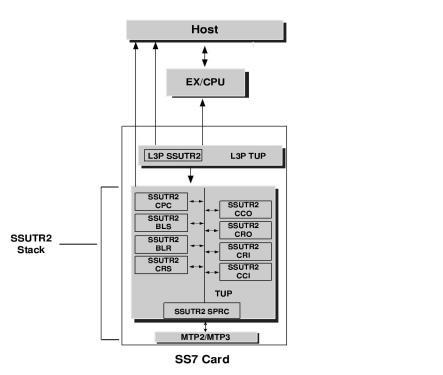
You are here: CSP Developer’s Guide: Common Channel Signaling > 5 TUP, BT IUP & SSUTR2 > Introduction to SSUTR2

Overview
SSUTR2 provides the facility to carry ISDN access information in the Telephone User Part (TUP) messages. Most of the signaling messages and message formats used in SSUTR2 are the same ones used in TUP. The SSUTR2 interface is transparent to the user and provides basic call setup and circuit maintenance signals, with associated procedures.
Software requirements are provided in the following recommendation:
• SSUTR2 V11-14T 1995
See also:
• Signaling, including Layer 3 Plus (L3P) and Layer 3 Plus TUP (L3P TUP), which is modified to support Virtual CICs.
Message Transfer Part (MTP), including MTP2 and MTP3.
SSUTR2 is variant of the Blue Book TUP and is used to define the signaling interface between a fixed network and a mobile network.
The principal differences between this protocol and TUP exist in the circuit states. SSUTR2 does not support hardware and software group blocking messages; instead, it has defined new circuit states for blocking and for the actions to be taken in those states. Host configuration of these specialized circuits is done using new config bytes. See SS7 PPL Information.
• In functionality, SSUTR2 has defined charge messages and procedures for the French National Network.
Excel uses the PPL environment to implement the SSUTR2. The modules shown in Figure 1.1 include:
• Signaling, including Layer 3 (LP3) and Layer 3 Plus TUP (L3P TUP), which are modified to support SSUTR2.
• TUP (SSUTR2)
• Message Transfer Part (MTP), including MTP2 and MTP3
Each module contains one or more PPL components, which are automatically used when a module is selected. For the SSUTR2 PPL data, see SS7 PPL Information.
The figure below illustrates the functional modules involved in the implementation of SSUTR2 on the SS7 card, and shows how the signaling stack integrates into the Excel platform architecture.
Figure 5-6 Excel Platform Architecture
